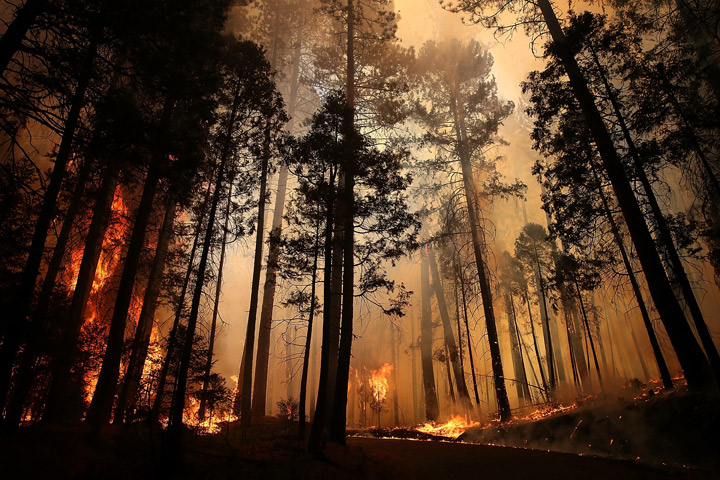TORONTO – The wildfire raging through the Yosemite National Park has shined a light on one of nature’s noblest trees: the giant sequoia.

“All of the plants and trees in Yosemite are important, but the giant sequoias are incredibly important both for what they are and as symbols of the National Park System,” park spokesman Scott Gediman said Saturday.
The Rim Fire has threatened two groves of giant sequoias that are unique to the region, prompting park employees to clear brush and set sprinklers. Among the largest and oldest living things on Earth, Yosemite’s “Grizzly Giant” is estimated to be about 1,800 years old—compared to the oldest confirmed age for a giant sequoia at 3,266.
MORE: 9 incredible photos of the Yosemite wildfire
But should we be concerned that we’ll lose a part of history in what’s described as one of California’s largest-ever wildfires?
University of Guelph forest ecologist Ze’ev Gedalof says no.
“Sequoia will almost certainly survive – even within the Rim fire there will be skips and unburned patches where individual trees will survive,” he said in an email to Global News. “New seedlings will establish from the seeds of these survivors, as well as from patches of the fire that burn at lower severity.”
Gedalof explained mature sequoia have thick bark and few bottom branches, which prevents fire from traveling up into the tree crowns. He said sequoias are actually fire dependent, but acknowledged that smaller trees growing in recent decades have created “ladder” fuels.
Gedalof said sequoia seeds are released from their cones partly by the fire’s heat, which dries and opens the cones.
And that “ecological complexity” is a big deal for what are arguably the largest living organisms on Earth.
Gedalof said trees like the giant sequoia act as a window to the distant past, including insights into the changing Earth’s atmosphere, mega-droughts, climatic variability, wildfire and even “the rise and fall of civilizations.”
Not to mention the animals.
“Their unusual size provides a range of habitat types for diverse animal species,” he explained. “Their cones have evolved a highly unusual trait, edible scales, to which at least three animals have co-evolved a feeding preference.”
Gedalof says the gelechiid moth, a type of longhorn beetle, and the Douglas squirrel all eat the cone scales of the sequoia, but not the seeds.
“A squirrel may feed on an average of 200 cones per large tree per year, thus releasing about 40,000 seeds per tree,” according to the National Park Service Giant Sequoia Ecology page.
Then there’s the sequoia’s cultural significance: the man widely considered the godfather of the conservation movement, John Muir, was inspired by the trees in what’s now Yosemite National Park.
“Without those trees we might not have a system of National Parks in the U.S. or Canada,” wrote Gedalof.
Email the author at erika.tucker@globalnews.ca


Comments